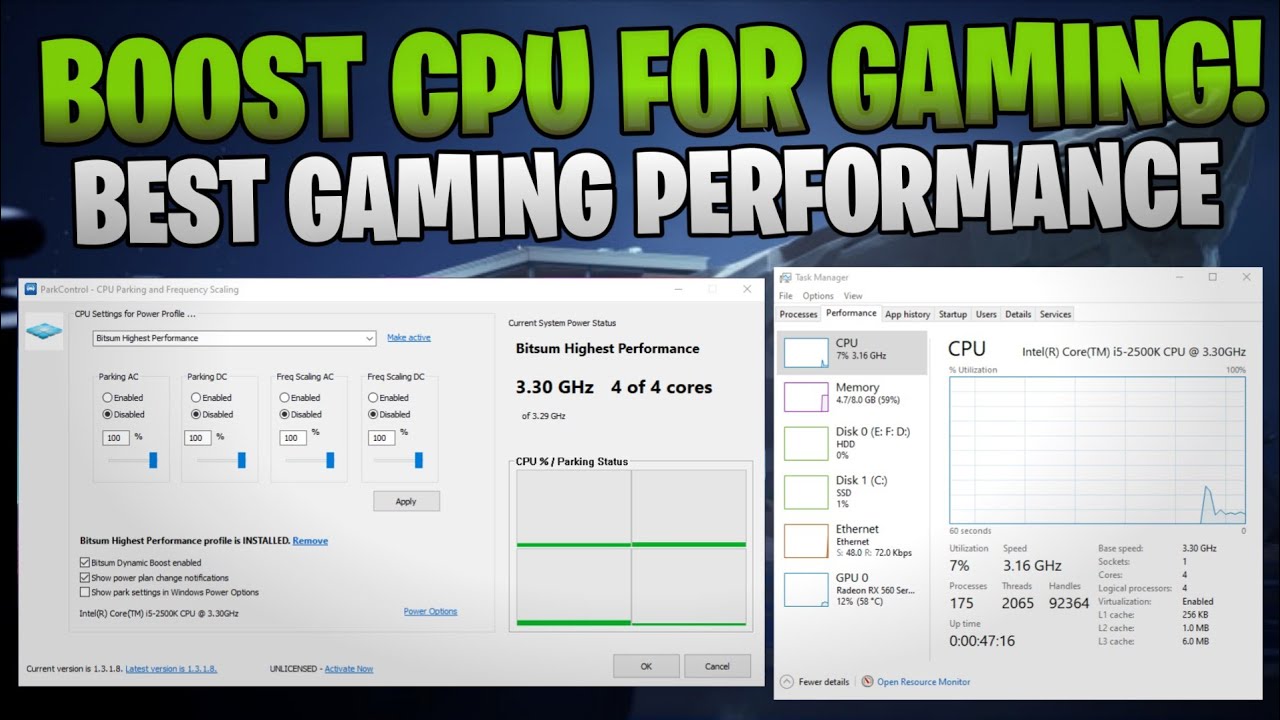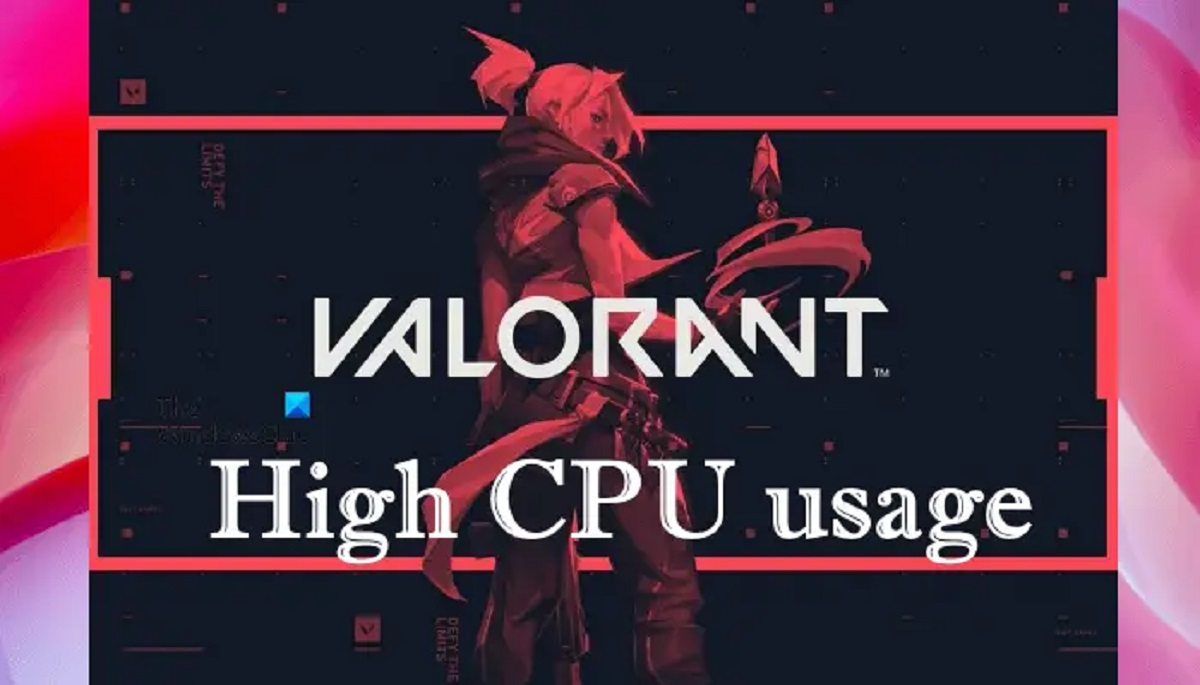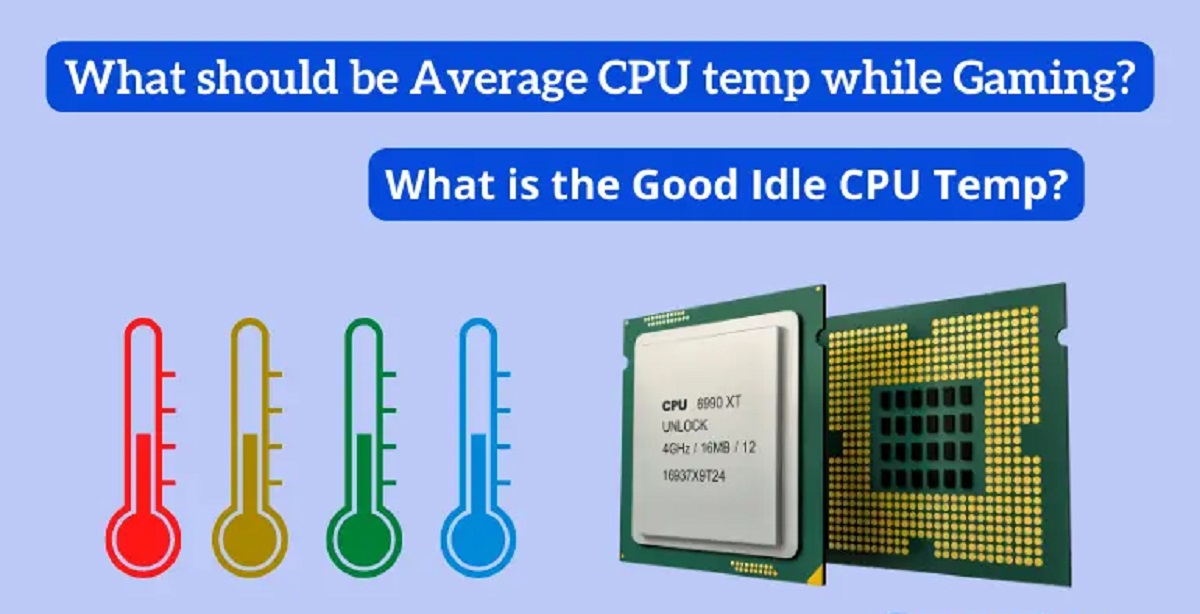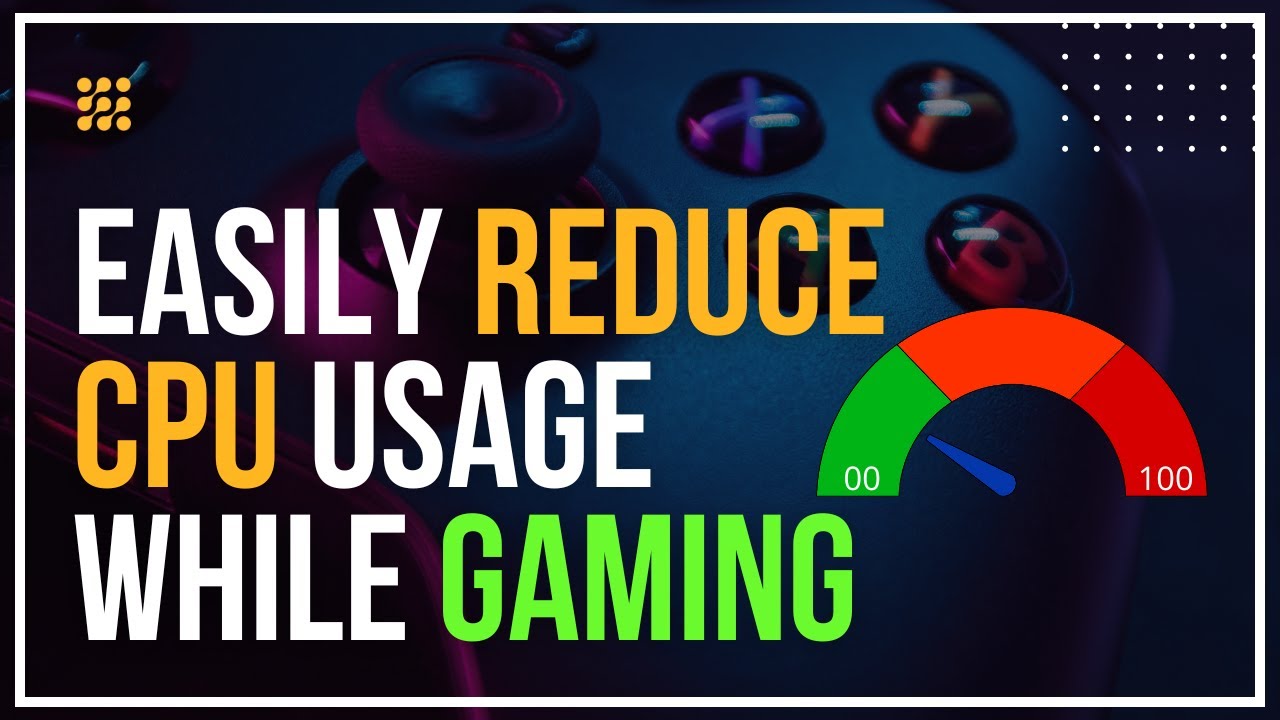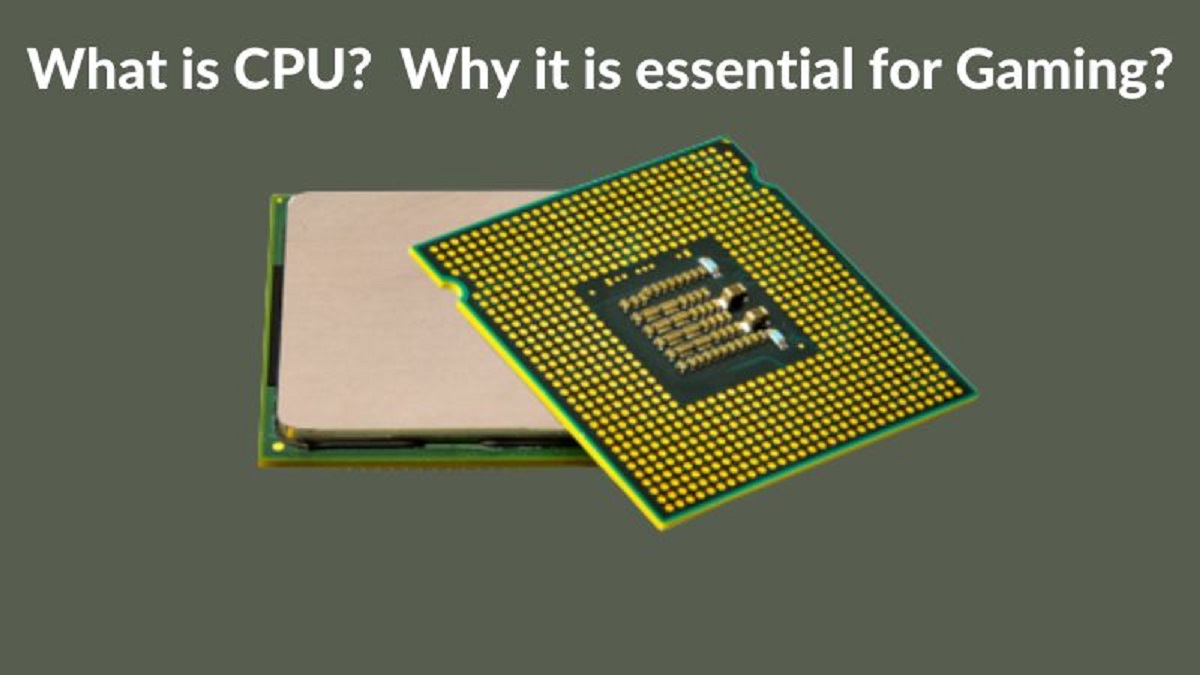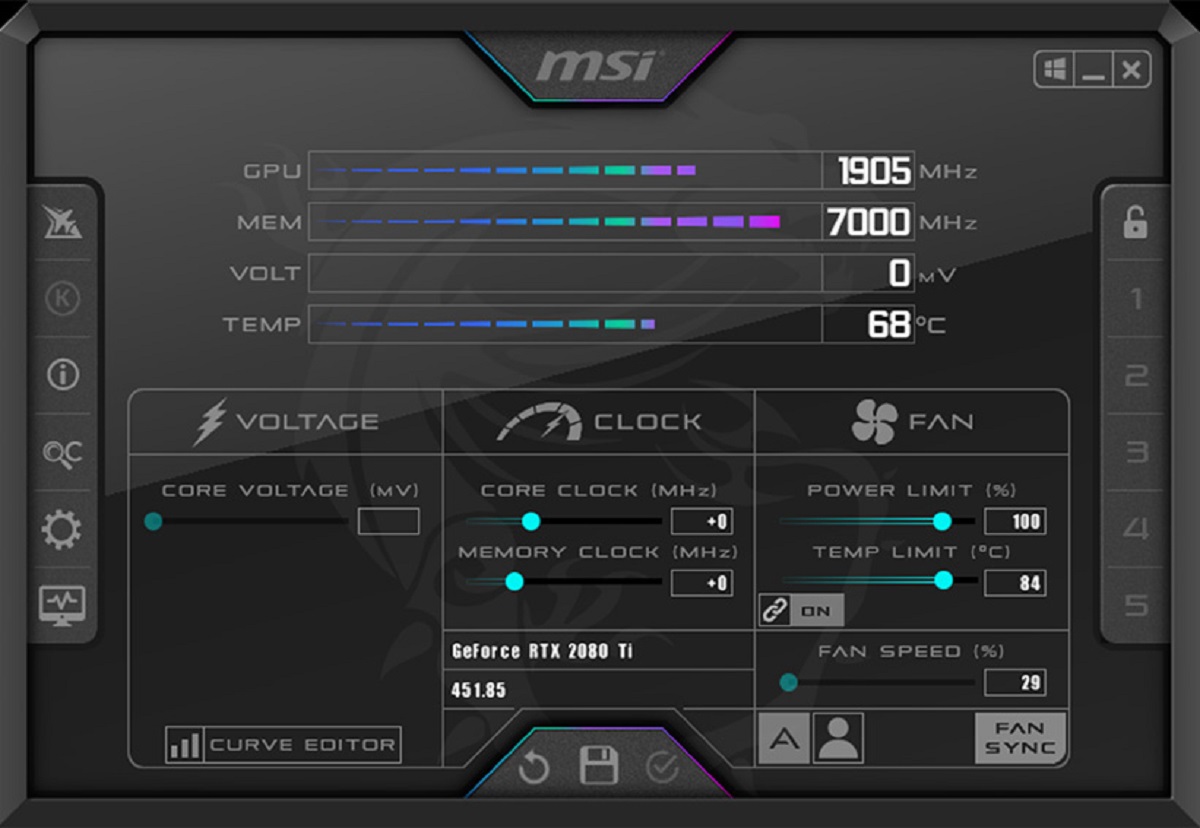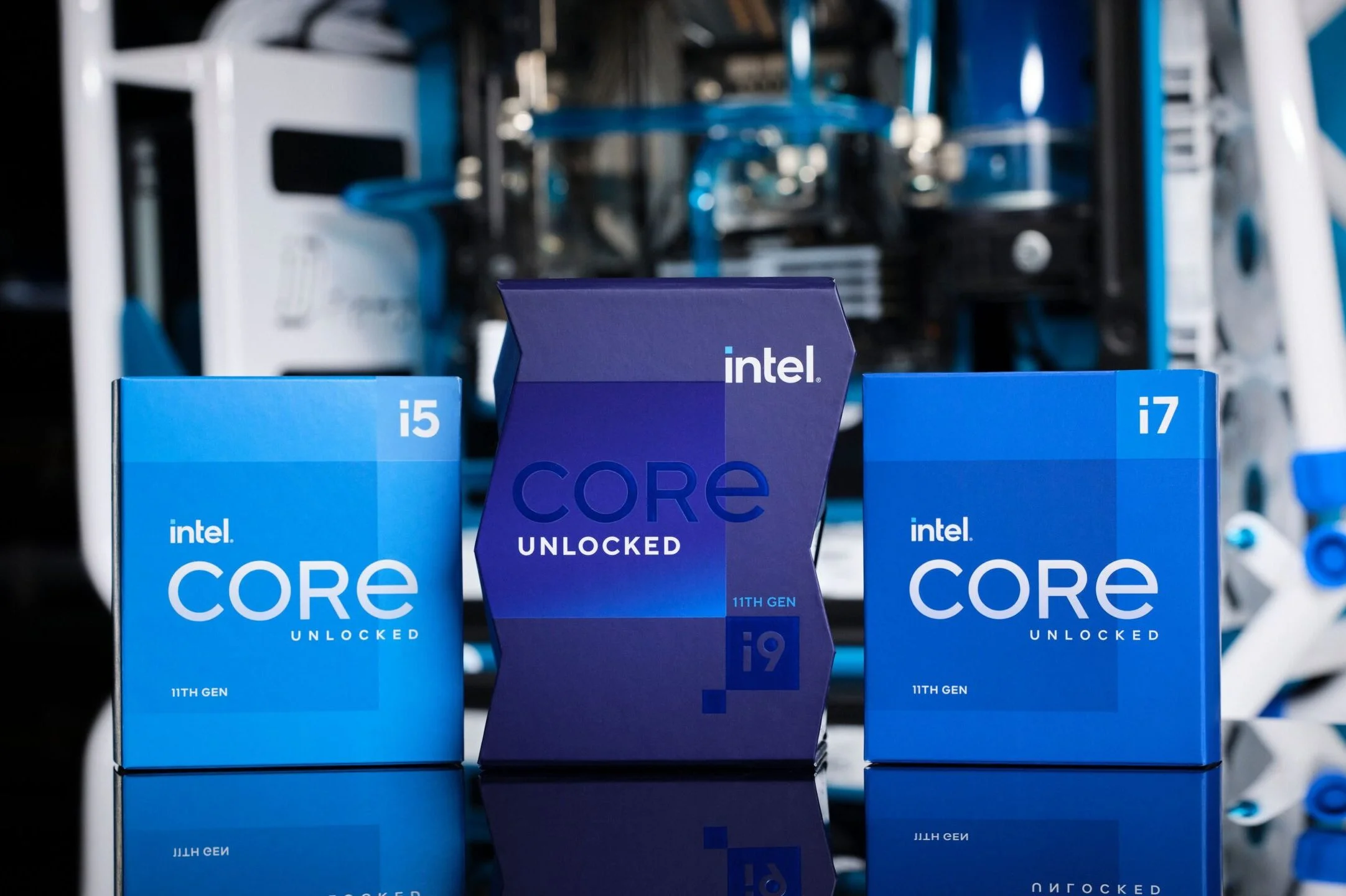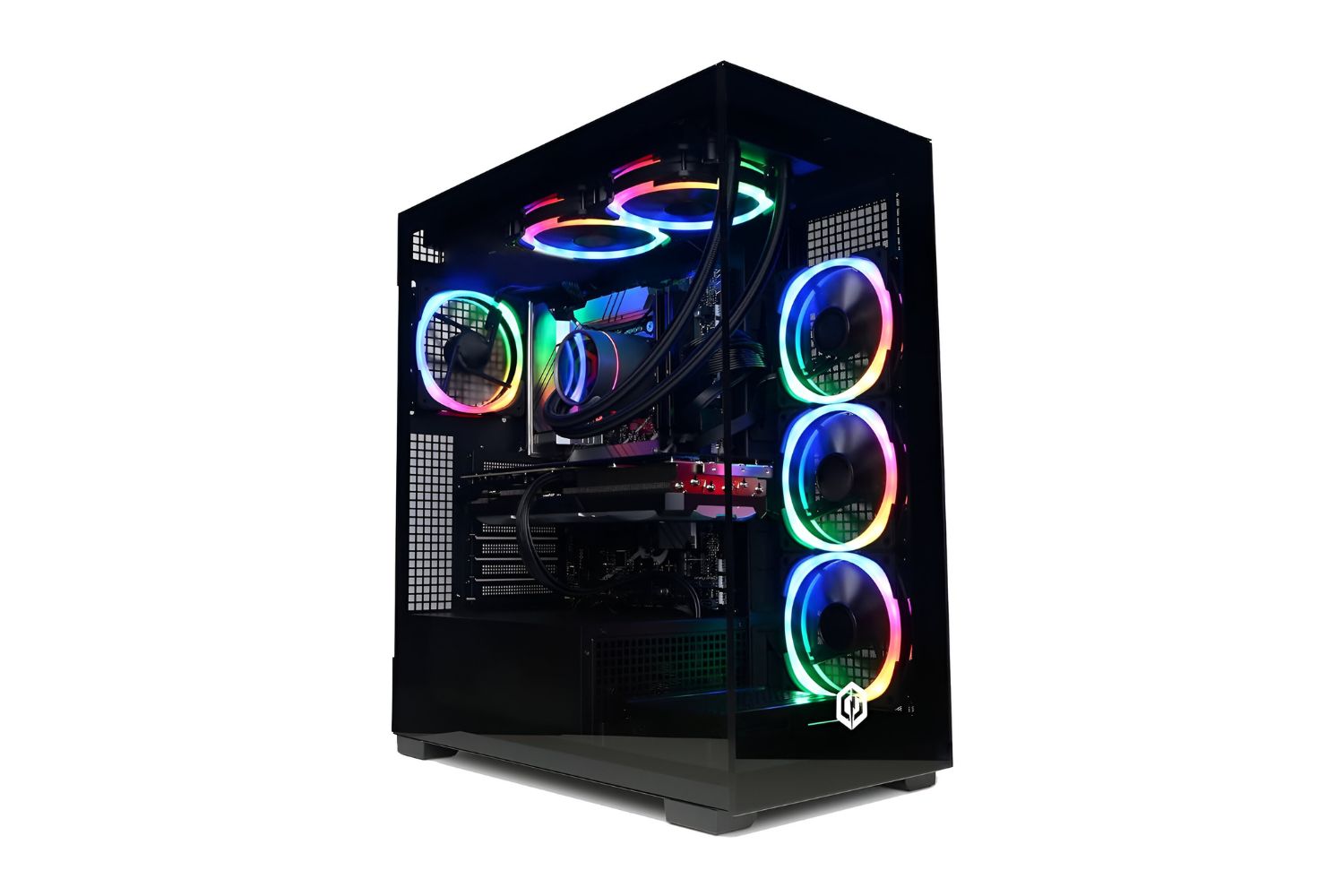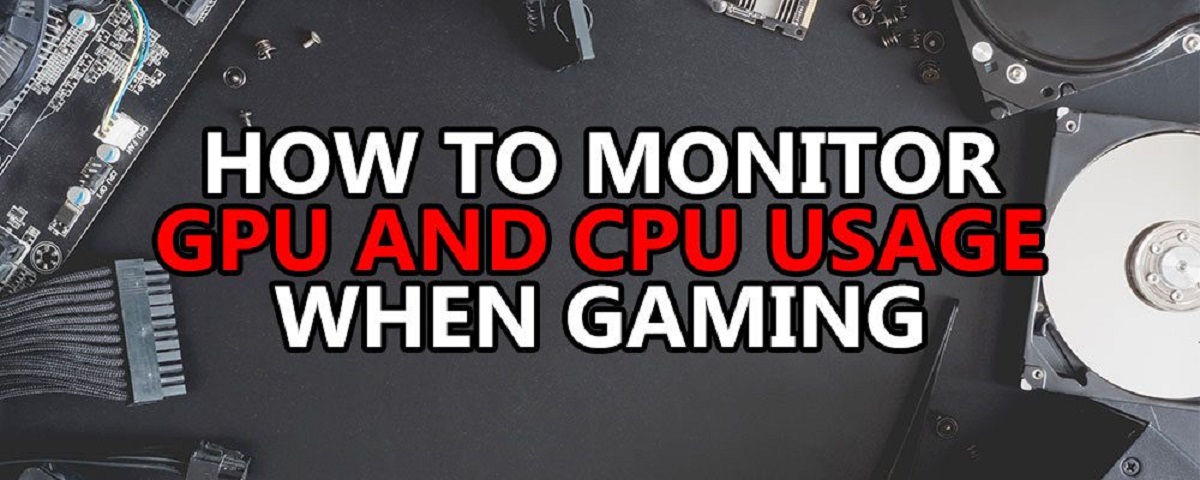Introduction
Gaming is a popular activity that requires the utmost performance from your computer’s CPU (Central Processing Unit). The CPU plays a crucial role in running games smoothly, and optimizing its performance can greatly enhance your gaming experience. Whether you’re dealing with lag, slow loading times, or choppy framerates, there are various ways to increase your CPU performance for gaming.
In this article, we will outline several techniques to improve the performance of your CPU specifically for gaming. By implementing these methods, you can maximize your gaming experience without breaking the bank on expensive hardware upgrades.
Before we dive into the techniques, it’s important to understand the basics of how your CPU works and its limitations. This knowledge will help you make informed decisions when optimizing your CPU for gaming.
The CPU is the “brain” of your computer, responsible for executing instructions and calculations. It consists of one or more cores, each capable of handling multiple tasks simultaneously. The speed of the CPU is measured in GHz (Gigahertz), representing the number of instructions it can process per second.
Gaming often requires high CPU clock speeds and efficient multitasking capabilities. However, running games at maximum settings can put a strain on your CPU, potentially leading to performance issues. Fortunately, there are ways to overcome these limitations and optimize your CPU for smoother gaming experiences.
In the following sections, we will explore techniques such as overclocking your CPU, upgrading your CPU, optimizing power settings, closing unnecessary background processes, adjusting graphics settings in games, updating graphics drivers, and monitoring CPU temperature. These techniques, when implemented correctly, can significantly boost your CPU performance and enhance your gaming sessions.
Ready to unleash the full potential of your CPU for gaming? Let’s dive into the details and learn how to optimize your CPU performance to enjoy seamless gaming experiences.
Understand CPU Basics
Before we delve into the methods of improving CPU performance for gaming, it’s essential to have a basic understanding of how the CPU works. This knowledge will help you make informed decisions when optimizing your CPU for gaming purposes.
The CPU (Central Processing Unit) is the primary component responsible for executing instructions and calculations in your computer. It acts as the brain of your system, handling all the necessary processing tasks. The speed and efficiency of the CPU directly impact the overall performance of your computer, especially when it comes to gaming.
The CPU consists of one or more cores, and each core can handle multiple threads simultaneously. A higher core count allows for better multitasking capabilities, as more tasks can be executed in parallel. However, it’s important to note that not all games are optimized to fully utilize multiple cores, so having a CPU with higher clock speeds can also play a significant role in gaming performance.
The clock speed of a CPU is measured in GHz (Gigahertz) and represents the number of instructions the CPU can process per second. Higher clock speeds generally result in faster processing and smoother gaming experiences. However, it’s important to strike a balance between high clock speeds and thermal limits, as running a CPU at excessively high temperatures can negatively impact its lifespan.
CPU performance can be further enhanced by utilizing cache memory. The cache is a small, fast memory space located directly on the CPU chip. It stores frequently accessed data, allowing the CPU to retrieve information more quickly. Larger cache sizes can improve gaming performance by reducing memory latency and increasing data access speeds.
Another factor to consider is the CPU’s architecture, which refers to the design and organization of the CPU’s components. Different CPU architectures offer varying levels of performance and efficiency. It’s crucial to choose a CPU that aligns with your gaming requirements and budget.
With a solid understanding of CPU basics, you’ll be better equipped to make informed decisions when optimizing your CPU for gaming. In the following sections, we will explore various techniques and strategies to increase your CPU performance, ensuring a smoother and more enjoyable gaming experience.
Overclocking Your CPU
If you’re looking to squeeze out some extra performance from your CPU for gaming, overclocking is a technique worth considering. Overclocking involves increasing your CPU’s clock speed beyond its default settings to achieve higher processing speeds.
It’s important to note that overclocking your CPU comes with risks, and it may void your warranty. Additionally, it can generate more heat, which could potentially lead to stability issues if not managed properly. However, if done correctly, overclocking can provide noticeable improvements in gaming performance.
Before you begin overclocking, ensure that you have a robust cooling system in place to dissipate the additional heat generated by the CPU. This can include an aftermarket CPU cooler and proper ventilation within your computer case.
To overclock your CPU, you will need to access your computer’s BIOS or UEFI settings. These settings can be accessed by pressing a specific key during the boot process, usually indicated on the screen.
Once in the BIOS or UEFI settings, locate the CPU settings or overclocking options. The specific options and terminology may vary depending on your motherboard manufacturer and model.
Start by gradually increasing your CPU’s clock speed, typically through the base clock or multiplier settings. Increase the clock speed incrementally, such as by 100 MHz, and then test the stability of your system. You can use stress testing tools such as Prime95 or AIDA64 to ensure that your system remains stable under heavy loads.
Monitor your CPU’s temperature during the stress testing process. If the temperature exceeds safe limits, you may need to reduce your overclock or adjust your cooling configuration.
Keep in mind that each CPU is unique, and not all CPUs can be overclocked to the same extent. It’s essential to find the optimal balance between increased performance and stable operation.
Lastly, be aware that overclocking your CPU can increase power consumption and potentially reduce its lifespan due to increased stress. It’s crucial to find a balance that improves gaming performance without compromising the long-term health of your CPU.
By overclocking your CPU, you can potentially unlock additional performance for gaming. However, it’s important to approach this technique with caution and ensure that you understand the risks involved. If done correctly, you can enjoy smoother gameplay and improved framerates in your favorite games.
Upgrade Your CPU
If you find that your current CPU is struggling to keep up with the demands of modern gaming, it may be time to consider upgrading to a more powerful CPU. Upgrading your CPU can provide a significant boost in gaming performance, as newer processors often offer improved clock speeds, additional cores, and enhanced architectural designs.
When considering a CPU upgrade, there are several factors to keep in mind. Firstly, ensure compatibility with your current motherboard. CPUs are designed to fit specific motherboard socket types, so it’s essential to choose a CPU that is compatible with your motherboard’s socket.
Research and compare different CPU models to find one that matches your gaming requirements. Consider factors such as clock speed, core count, cache size, and architecture. Look for CPUs that offer a noticeable increase in performance compared to your current processor.
Consider your budget as well. Upgrading to the latest and most powerful CPUs may come with a significant price tag. Assess your budget and prioritize getting the best CPU that fits within your financial constraints.
Keep in mind that upgrading your CPU may also require a BIOS update for your motherboard. Consult your motherboard’s manufacturer website for the latest BIOS updates and instructions on how to perform the update.
Once you’ve chosen a new CPU and ensured compatibility, follow the manufacturer’s instructions for installation. This typically involves removing your old CPU, applying thermal paste to the new CPU, and correctly mounting it in the CPU socket.
After installing the new CPU, ensure that your computer recognizes the new processor. Enter the BIOS or UEFI settings and verify that the correct CPU information is displayed.
When upgrading your CPU, it’s worth considering a comprehensive upgrade that includes other components. For instance, upgrading your CPU may also necessitate upgrading your motherboard and RAM to take full advantage of the new processor’s capabilities.
By upgrading your CPU, you can significantly improve gaming performance, allowing for smoother gameplay, faster loading times, and increased frame rates. Take the time to research and choose a CPU that provides a substantial performance boost within your budget, ensuring that you fully enjoy the latest games without any processing limitations.
Optimize Your Power Settings
When it comes to optimizing your CPU performance for gaming, one often-overlooked aspect is the power settings of your computer. By adjusting your power settings, you can optimize your CPU’s performance and ensure that it operates at its full potential during gaming sessions.
Windows operating systems offer various power plans, each with different settings that prioritize power conservation or performance. To access the power settings, navigate to the Control Panel or Settings and click on “Power Options.”
Within the power options, you may find different pre-configured power plans such as “Balanced,” “Power Saver,” and “High Performance.” By default, the “Balanced” plan is usually selected, which aims to strike a balance between performance and power consumption.
For gaming purposes, it’s recommended to switch to the “High Performance” power plan. This plan ensures that your CPU operates at maximum performance, allowing for smoother gameplay and faster processing speeds. Keep in mind that selecting the “High Performance” plan may increase power consumption, potentially reducing battery life for laptops.
If you’d like more control over specific power settings, you can customize the power plan to further optimize CPU performance. Click on “Change plan settings” to access the advanced settings.
Within the advanced settings, you can adjust parameters such as the CPU minimum and maximum state, system cooling policy, and display brightness settings. By increasing the CPU’s minimum and maximum state values, you can ensure that the CPU always operates at its full clock speed, minimizing any potential throttling.
Another setting to consider is the cooling policy. By setting it to “Active” instead of “Passive,” the system will prioritize cooling and maintain lower temperatures, allowing the CPU to perform optimally without throttling due to excessive heat.
Lastly, disabling any power-saving features while gaming can help maintain consistent CPU performance. These features, such as CPU throttling or dimming the display, are designed to conserve power but can negatively impact gaming performance. Disable these features within the power settings to ensure the CPU operates at its maximum capabilities.
Optimizing your power settings may seem like a small adjustment, but it can have a noticeable impact on your CPU’s performance during gaming. By selecting the “High Performance” power plan and customizing the advanced settings, you can ensure that your CPU operates at its full potential, providing a smoother and more responsive gaming experience.
Close Unnecessary Background Processes
When it comes to optimizing CPU performance for gaming, one effective strategy is to close unnecessary background processes. Background processes are programs and services that run in the background while you use your computer, consuming valuable CPU resources.
Many programs and applications automatically start with your computer and continue running even when you’re not actively using them. These background processes can consume CPU power and memory, potentially causing performance issues during gaming sessions.
To identify and close unnecessary background processes, you can use the Task Manager on Windows. Simply press Ctrl + Shift + Esc or right-click on the taskbar and select “Task Manager” to open it.
Within the Task Manager, click on the “Processes” or “Details” tab to see a list of running processes. The list will display the CPU and memory usage for each process, allowing you to identify resource-intensive programs.
Sort the processes by CPU usage to see which ones are consuming the most processing power. Evaluate each process and determine whether it is necessary for your gaming needs. Some common examples of unnecessary background processes include instant messaging apps, media players, or software updaters.
To close a process, right-click on it and select “End Task” or “End Process.” Be cautious when closing processes as some may be critical for the proper functioning of your operating system or other essential applications. Only close processes that you are confident are not required.
Alternatively, you can prevent certain programs from launching at startup altogether. Open the Task Manager, click on the “Startup” tab, and disable any programs that you don’t need to start alongside your computer.
In addition to manually closing processes, you can also use third-party software to help streamline and optimize your background processes. These programs can automatically detect and close unnecessary processes, freeing up CPU resources for gaming.
By closing unnecessary background processes, you can significantly reduce CPU usage and improve gaming performance. With more CPU power dedicated to your game, you can experience smoother gameplay, reduced input lag, and overall improved performance during your gaming sessions.
Adjust Graphics Settings in Games
When it comes to optimizing CPU performance for gaming, adjusting the graphics settings within the games themselves can have a significant impact. Graphics settings determine the level of visual detail and effects in a game, and higher settings can put more strain on your CPU.
Most modern games offer a range of graphics settings that allow you to customize the level of detail and performance trade-off. These settings typically include options such as resolution, texture quality, anti-aliasing, shadows, and effects.
To find the graphics settings in a game, look for a “Settings” or “Options” menu. Within this menu, you’ll often find a “Graphics” or “Video” section where you can adjust various settings.
Start by adjusting the resolution setting. Higher resolutions require more GPU power, but they can also add strain to your CPU. Consider lowering the resolution slightly to relieve some processing load on your CPU without compromising the visual experience too much.
Next, experiment with texture quality settings. Higher texture quality settings can provide more detailed and realistic textures in the game, but they also require more CPU power to process. Consider lowering this setting to a level that still provides good visual quality while reducing the strain on your CPU.
Anti-aliasing is another setting that can impact CPU performance. Anti-aliasing smooths jagged edges in games, resulting in a cleaner and more polished appearance. However, it can significantly impact CPU performance, especially at higher levels. Consider lowering anti-aliasing or using less demanding options, such as FXAA, which provides a good balance between visual quality and performance.
Shadows and effects are often visually impressive but can be CPU-intensive. Consider reducing the level of detail for these settings to lighten the CPU load while still maintaining an enjoyable visual experience.
It’s important to strike a balance between visual quality and performance when adjusting graphic settings. Experiment with different settings and test how they impact your gaming experience. Monitor your CPU usage and frame rates to find the optimal settings that provide a visually appealing experience without compromising CPU performance.
Each game may have different graphics settings and optimizations, so explore the options available and find what works best for each specific game that you play.
By adjusting graphic settings in games, you can fine-tune the level of detail and effects to optimize CPU performance. Finding a balance that suits your preferences and hardware capabilities can result in smoother gameplay and more enjoyable gaming sessions.
Update Your Graphics Drivers
Graphics drivers are an essential component for optimal CPU performance in gaming. They act as a bridge between your operating system and your graphics card, enabling smooth communication and efficient utilization of your CPU’s capabilities.
Graphics card manufacturers, such as NVIDIA and AMD, regularly release driver updates that include performance improvements, bug fixes, and optimizations for new game releases. Keeping your graphics drivers up to date ensures that your CPU can take full advantage of these enhancements.
To update your graphics drivers, you’ll need to identify the manufacturer and model of your graphics card. This information can be found in the Device Manager on Windows or the About This Mac section on macOS.
Once you know the details of your graphics card, visit the manufacturer’s website and navigate to the drivers or support section. Look for the latest driver version available for your specific graphics card model and download it.
Before installing the new graphics driver, it’s a good idea to uninstall the existing driver to avoid any conflicts or issues. This can typically be done through the Control Panel on Windows or the System Preferences tab on macOS.
Once the old driver is uninstalled, run the downloaded driver installer and follow the on-screen instructions. The installer will guide you through the process of installing the new driver on your system.
After the installation is complete, it’s recommended to restart your computer to ensure that the changes take effect properly.
Updating your graphics drivers can not only improve CPU performance but also provide you with access to the latest features and optimizations offered by the graphics card manufacturer. These updates can result in better game compatibility, improved frame rates, and reduced latency during your gaming sessions.
It’s important to periodically check for new driver updates and make it a habit to keep your graphics drivers up to date. This ensures that your CPU is running with the latest optimizations and improvements, enhancing overall gaming performance and reducing the chances of encountering compatibility issues.
By staying on top of graphics driver updates, you can unleash the full potential of your CPU and graphics card combination, delivering a more immersive and enjoyable gaming experience.
Monitor Your CPU Temperature
Monitoring your CPU’s temperature is crucial for optimal performance and longevity, especially during intense gaming sessions. When a CPU gets too hot, it can throttle its performance to prevent damage, leading to decreased performance and potential instability.
There are various tools available to monitor your CPU’s temperature, such as CPU temperature monitoring software or built-in monitoring features on your motherboard. These tools provide real-time temperature readings, allowing you to keep an eye on your CPU’s temperature while gaming.
Excessive heat can be caused by factors such as inadequate cooling, dust accumulation, or overclocking beyond safe limits. To ensure that your CPU operates within safe temperature ranges, consider the following measures:
1. Regularly clean your cooling system: Dust can accumulate on cooling fans and heat sinks, hindering proper heat dissipation. Use compressed air or a soft brush to clean these components, ensuring optimal airflow and heat transfer.
2. Ensure proper ventilation: Make sure your computer case has adequate airflow to dissipate heat. Ensure that the intake and exhaust fans are clean, unobstructed, and functioning correctly.
3. Check the thermal paste: The thermal paste is a substance that helps transfer heat between the CPU and cooling apparatus. Over time, the thermal paste may dry out or become less effective. If you notice high CPU temperatures, consider replacing the thermal paste to improve heat transfer.
4. Verify CPU cooler functioning: Ensure that your CPU cooler is securely mounted and operating correctly. If you’re using an aftermarket cooler, check that it is properly seated and the fan is spinning without any obstructions.
5. Avoid excessive overclocking: Overclocking can generate additional heat, so ensure that you are not pushing your CPU beyond its safe limits. Monitor the temperature closely while stress testing your CPU to ensure it remains within acceptable ranges.
6. Monitor temperature during gaming: Use temperature monitoring software to keep an eye on your CPU temperature while gaming. If you notice temperatures consistently exceeding safe limits, you may need to take further measures to optimize cooling or reduce overclocking.
By monitoring CPU temperature and taking appropriate steps to keep it within safe limits, you can maintain optimal CPU performance and ensure the longevity of your hardware.
Remember that every CPU has different temperature thresholds, depending on the model and manufacturer. Refer to your CPU’s specifications or consult with the manufacturer’s guidelines to determine the safe operating temperature range for your specific CPU.
Monitoring CPU temperature is a proactive approach to maintaining optimal performance and preventing any potential damage caused by excessive heat. By ensuring that your CPU operates at appropriate temperatures, you can enjoy uninterrupted gaming sessions and prolong the lifespan of your hardware.
Conclusion
Optimizing CPU performance for gaming is essential to ensure smooth gameplay, reduced lag, and an overall enjoyable gaming experience. By implementing the techniques outlined in this article, you can enhance your CPU’s capabilities without necessarily investing in expensive hardware upgrades.
Understand the basics of your CPU, including clock speed, cores, cache, and architecture. This knowledge will help you make informed decisions when optimizing your CPU for gaming.
Consider overclocking your CPU to achieve higher clock speeds and improved performance. However, be cautious as this process carries risks and may void your warranty.
If your CPU is holding back your gaming performance, upgrading to a more powerful CPU can make a significant difference. Research and choose a CPU that aligns with your gaming requirements and budget.
Optimizing power settings can further boost CPU performance. Select the “High Performance” power plan in Windows and customize the advanced settings for optimal CPU operation.
Close unnecessary background processes to free up CPU resources. Use the Task Manager to identify and close programs that are not essential for gaming.
Adjust graphics settings in games to find the right balance between visual quality and performance. Experiment with resolution, texture quality, anti-aliasing, shadows, and effects to optimize CPU utilization.
Regularly update your graphics drivers to benefit from performance improvements and bug fixes provided by the graphics card manufacturers.
Lastly, monitor your CPU temperature to prevent overheating and ensure optimal performance. Clean your cooling system, check thermal paste application, and verify the functioning of your CPU cooler.
By implementing these techniques and maintaining good CPU care, you can significantly enhance your CPU’s performance for gaming. The improvements in processing power, stability, and responsiveness will result in smoother gaming experiences and allow you to enjoy your favorite games to the fullest.







